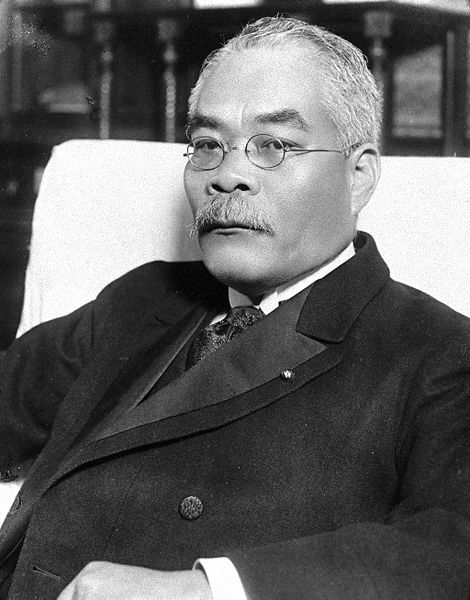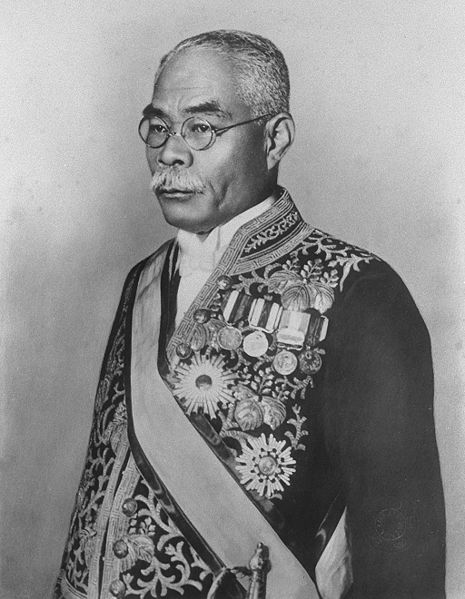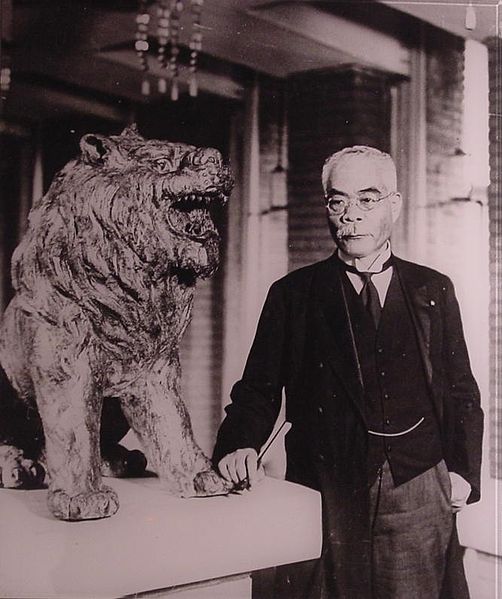<Back to Index>
- 27th Prime Minister of Japan Osachi Hamaguchi, 1870
PAGE SPONSOR



Osachi Hamaguchi (濱口 雄幸 Hamaguchi Osachi, 1 April 1870 – 26 August 1931) was a Japanese politician and the 27th Prime Minister of Japan from 2 July 1929 to 14 April 1931. He was called the "Lion prime minister" (ライオン宰相) due to his physical features.
Hamaguchi was born in what is now Kōchi city, Kōchi Prefecture on the island of Shikoku; his father was an official in the forestry department. He graduated from the Law College of Tokyo Imperial University and began his career as a bureaucrat in the Ministry of Finance. In 1907, he became director of the Monopoly Bureau. He became Vice Communications Minister in 1912 and Vice Finance Minister in 1914.
Hamaguchi was elected to the lower house in the Japanese Diet in 1915, as a member of the Kenseikai political party. He later served as Finance Minister under the 1st and 2nd administrations of Katō Takaaki (1924, 1925) and as Home Minister under the cabinet of Wakatsuki Reijirō (1926).
In 1927, Hamaguchi became the chairman of the new Rikken Minseitō political party formed by the merger of the Kenseikai and the Seiyu Hontō.
After the collapse of the administration of Tanaka Giichi in 1929, Hamaguchi became Prime Minister of Japan and formed a cabinet based largely on Minseitō party members.
With a strong sense of his own rectitude and a tough, stubborn temperament, Hamaguchi inspired trust. Initial public confidence bolstered Hamaguchi's government and allowed him to successfully challenge the ascendant military radicals within Japan. However, his settlement of the London Naval Conference treaty of 1930, in which he tried to set the ratio of battle ships for the United States, Great Britain, and Japan at 10:10:7 but was forced to agree to a 10:10:6 ratio, led many right wing politicians and conservatives to think that Hamaguchi had sold out on Japanese national security. This released a surge of Japanese nationalism and resulted in the end of Shidehara / Hamaguchi diplomacy (which supported peaceful economic expansion).
In his term of office, Hamaguchi attempted to strengthen the Japanese economy through fiscal austerity measures. Hamaguchi's fiscal policy, however, proved disastrous. The Hamaguchi government put Japanese yen on the gold standard to help stimulate exports, a measure that greatly worsened the impact of the worldwide Great Depression of 1929 on the already feeble economy. This failure of Hamaguchi's economic policies played into the hands of right wing elements, already enraged by the government's conciliatory foreign policies and efforts to reduce military spending.
In 1931 Hamaguchi's cabinet sponsored a (watered down) bill on women's suffrage. It would have granted women over the age of 25 the right to vote in local elections and stand for office given their husbands' approval. The bill passed the lower house, but it was defeated in the House of Peers in March 1931 by a vote of 184 to 62.
Hamaguchi fell victim to an assassination attempt on 14 November 1930 when he was shot in Tōkyō Station by Tomeo Sagoya, a member of the Aikoku-sha ultranationalist secret society. (Nine years earlier another Prime Minister, Hara Takashi, had been assassinated near the same place.) The wounds kept Hamaguchi hospitalized for several months, but he struggled through physical weakness to win the February 1931 election. He returned to his post in March 1931 but resigned a month later to be replaced by Wakatsuki Reijirō.